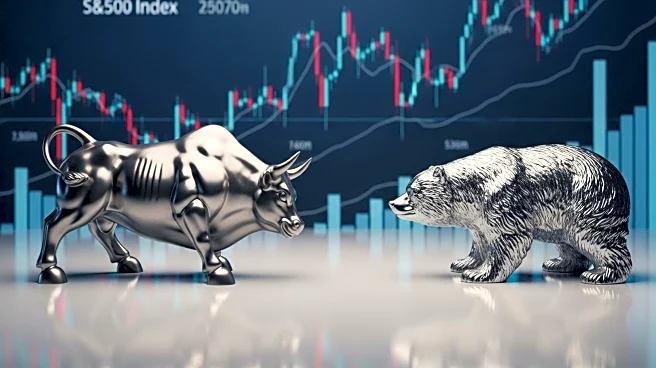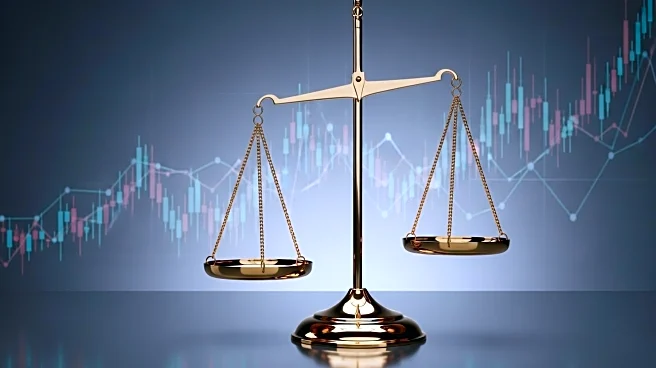What's Happening?
Despite potential economic disruptions from government shutdowns, the stock market has shown resilience, with investors continuing to buy rather than sell. Historically, shutdowns have not significantly impacted the market, and recent trends suggest that investors are using these periods as buying opportunities. The market's ability to rally post-shutdowns has created a cycle of confidence among investors, who are now less likely to sell during these times. This behavior is partly driven by expectations of interest rate cuts by the Federal Reserve, which could further boost stock prices.
Why It's Important?
The stock market's resilience in the face of government shutdowns highlights a shift in investor behavior and market dynamics. This trend suggests that investors are becoming more confident in the market's ability to recover from short-term disruptions, potentially leading to increased market stability. However, this confidence could also lead to complacency, as investors may overlook potential risks and continue to invest in speculative assets. The ongoing bullish sentiment could drive further market growth, but it also raises concerns about the sustainability of such trends and the potential for a market correction.
What's Next?
As the market continues to show resilience, investors may increasingly focus on speculative assets and high-growth sectors, such as technology and renewable energy. This could lead to further market gains, but also heighten the risk of a bubble if valuations become unsustainable. Policymakers and financial analysts will likely monitor these trends closely, as any significant market correction could have broader economic implications. Additionally, the Federal Reserve's actions regarding interest rates will be a key factor in shaping market dynamics in the coming months.










